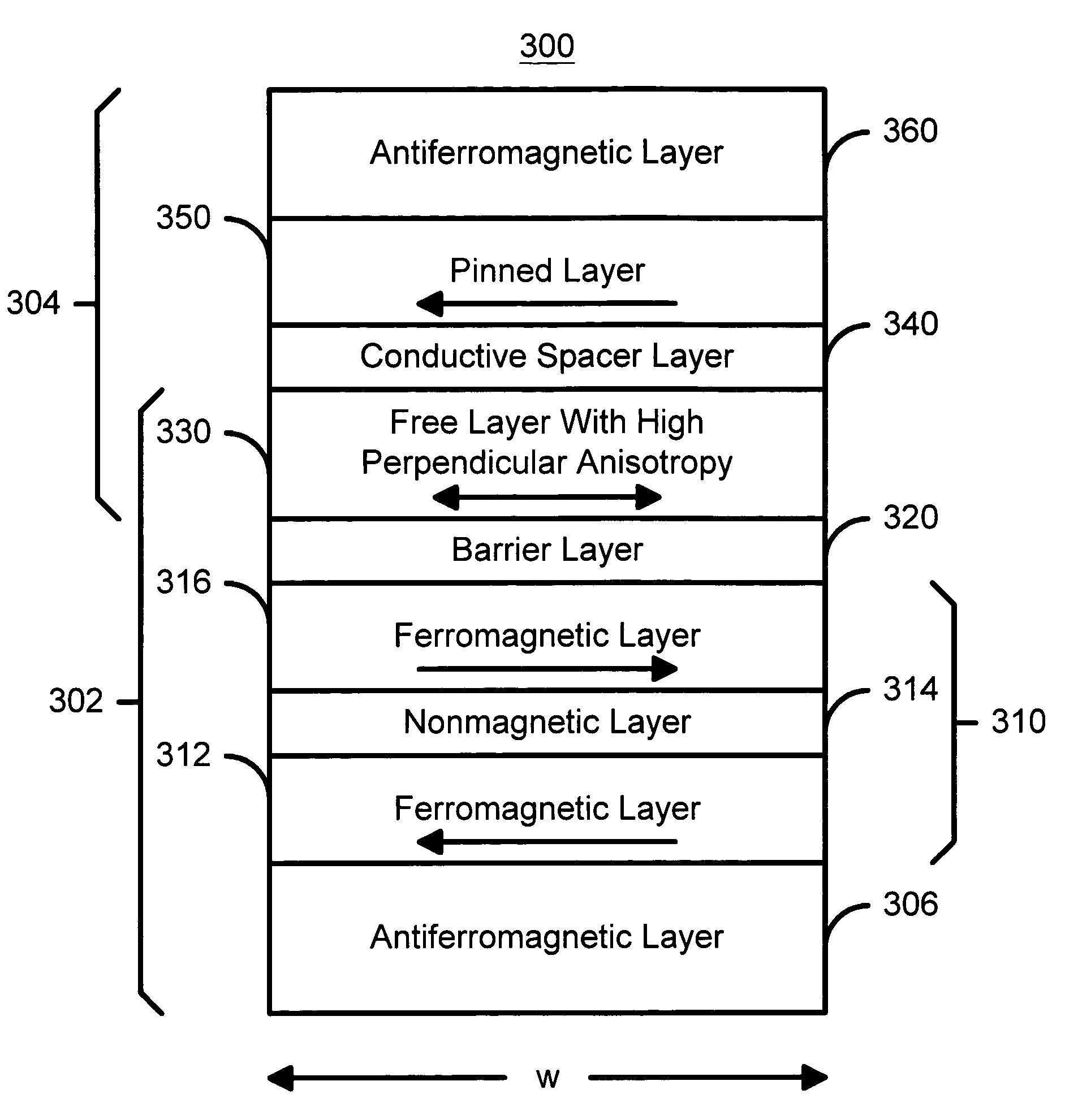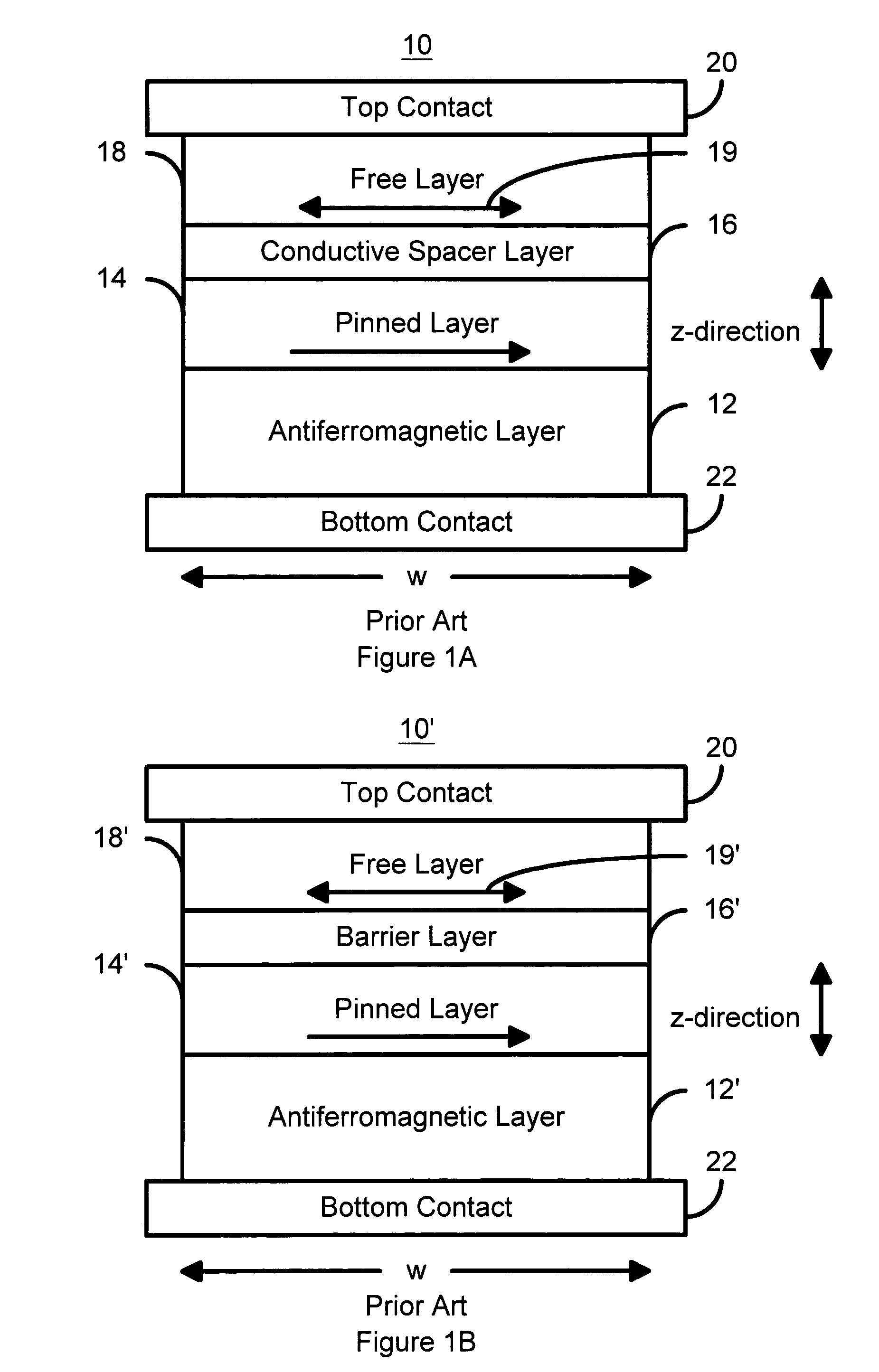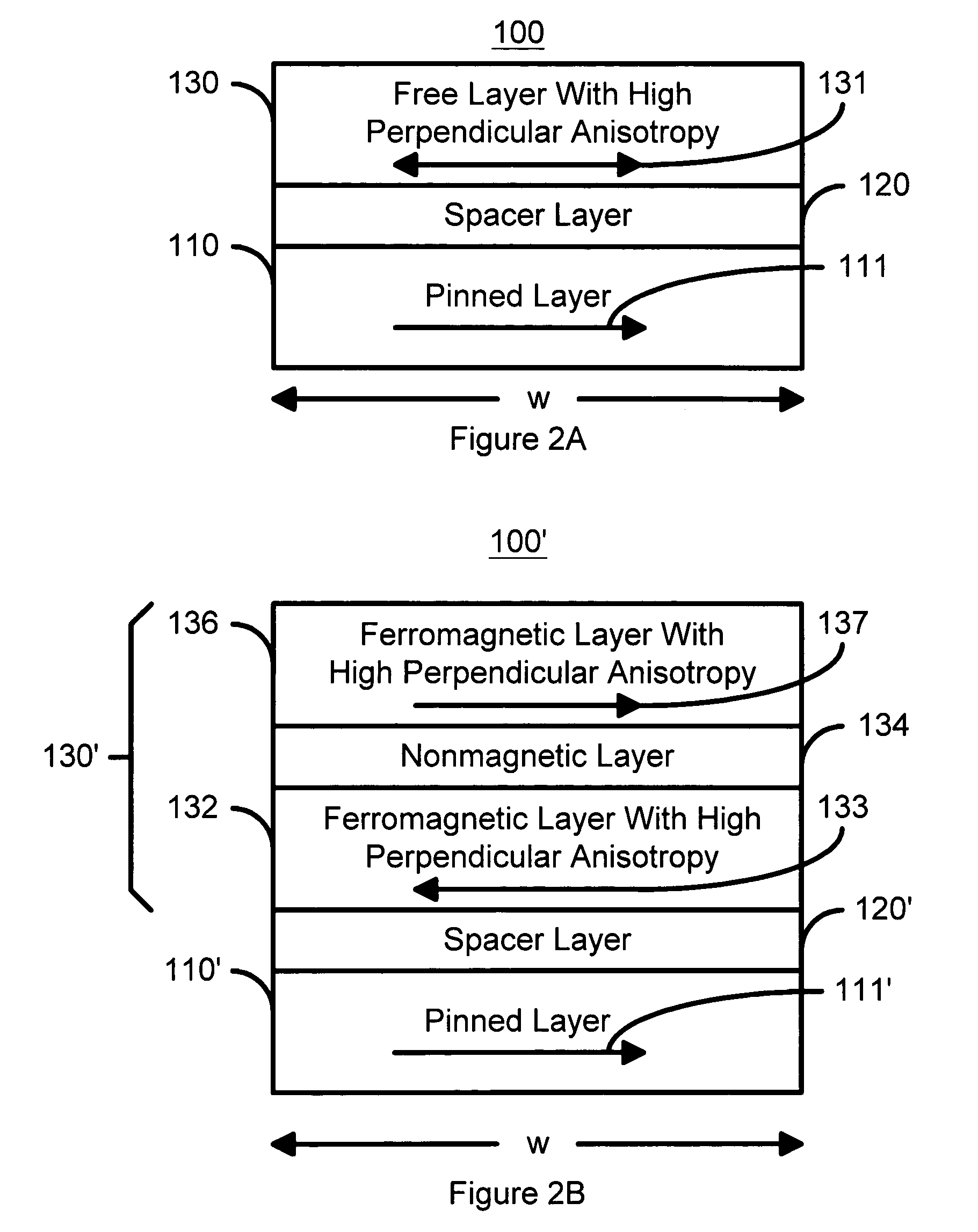Spin transfer magnetic element with free layers having high perpendicular anisotropy and in-plane equilibrium magnetization
a magnetic element and free layer technology, applied in the field of magnetic memory systems, can solve the problems of large transistor size and high power consumption, and achieve the effect of reducing switching current density and low current density
- Summary
- Abstract
- Description
- Claims
- Application Information
AI Technical Summary
Benefits of technology
Problems solved by technology
Method used
Image
Examples
first embodiment
[0031]To more particularly illustrate the method and system in accordance with the present invention, refer now to FIG. 2A, depicting a portion of a magnetic element 100 in accordance with the present invention having a reduced write current density for spin transfer. The magnetic element 100 is preferably used in a magnetic memory, such as a MRAM. Thus, the magnetic element 100 may be used in a memory cell including an isolation transistor (not shown), as well as other configurations of magnetic memories. Moreover, the magnetic element 100 preferably utilizes two terminals (not shown) near the top and bottom of the magnetic element. However, nothing prevents the use of another number of terminals, for example a third terminal near the center of the magnetic element. The magnetic element 100 includes a pinned layer 110, a spacer layer 120, and a free layer 130. As described below, the free layer 130 is configured to have a high perpendicular anisotropy. The magnetic element 100 gene...
second embodiment
[0052]FIG. 4 depicts a magnetic element 200 in accordance with the present invention having a reduced write current density for spin transfer. The magnetic element 200 includes a spin valve portion 204 and a spin tunneling junction portion 202 that share a free layer 230. The spin valve portion 204 includes a pinning layer 260 that is preferably an antiferromagnetic (AFM) layer 260, pinned layer 250, conductive spacer layer 240 such as Cu, and a free layer 230. In an alternate embodiment, the conductive spacer layer 240 could be replaced by a barrier layer. The spin tunneling junction portion 202 includes a pinning layer 206 that is preferably an antiferromagnetic (AFM) layer 206, pinned layer 210, barrier layer 220 that is an insulator configured to allow electrons to tunnel through it, and the free layer 230. Referring to FIGS. 2A and 4, the layers 250, 240, and 230 are analogous to the layers 110, 120, and 130 in the magnetic element 100 when the spacer layer 120 is conducting. S...
third embodiment
[0060]FIG. 6 depicts a portion of a magnetic element 400 in accordance with the present invention having a reduced write current density for spin transfer. The magnetic element includes two structures 402 and 404, each of which is analogous to the magnetic element 100, 100′, 100″, and / or 100′″. Thus, the structure 402 includes a pinned layer 410, a spacer layer 420, and a free layer 430 that are analogous to, for example, the layers 110, 120, and 130, respectively, of the magnetic element 100. The structure 402 also includes pinning layer 406 that is preferably an AFM layer. Similarly, the structure 404 includes a pinned layer 470, a spacer layer 460, and a free layer 450 that are analogous to, for example, the layers 110, 120, and 130, respectively, of the magnetic element 100. The structure 404 also includes pinning layer 480 that is preferably an AFM layer. One or both of the free layers 430 and 450 have a high perpendicular anisotropy. The free layer 430 and / or 450 may also be s...
PUM
| Property | Measurement | Unit |
|---|---|---|
| resistance | aaaaa | aaaaa |
| resistance | aaaaa | aaaaa |
| width | aaaaa | aaaaa |
Abstract
Description
Claims
Application Information
 Login to View More
Login to View More - R&D
- Intellectual Property
- Life Sciences
- Materials
- Tech Scout
- Unparalleled Data Quality
- Higher Quality Content
- 60% Fewer Hallucinations
Browse by: Latest US Patents, China's latest patents, Technical Efficacy Thesaurus, Application Domain, Technology Topic, Popular Technical Reports.
© 2025 PatSnap. All rights reserved.Legal|Privacy policy|Modern Slavery Act Transparency Statement|Sitemap|About US| Contact US: help@patsnap.com



